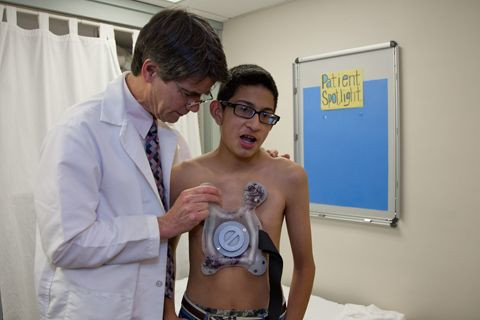Magnets May Help Kids With Chest Deformities

The deformity may be the most common one you've never heard of.
Pectus excatavum, or "sunken chest", is the most common chest deformity affecting 1 in 500 children and affects boys more often than girls. Some are born with it while in others pectus excatavum develops gradually. It is generally not life-threatening, but people with the condition tend to be self-conscious about their appearance and the concave chest puts pressure on the heart and lungs. There are two surgeries to correct the deformity, but they are invasive and painful. Opiate addiction is a risk which may cause families to shy away from the surgical procedure.
But a new procedure is taking hold that has been shown to benefit people with the condition. Doctors University of California, San Francisco's Benioff Children's Hospital put a magnet on the inside of patients' chest and use an external brace to pull out the chest cavity. Over the course of two years, doctors hope that they can gradually pull out the chest cavity. Doctors liken the procedure to orthodontic braces, which move the teeth little by little over the course of years. The magnets are virtually painless because the procedure works so slowly.
The key is to get patients in to see doctors while their chests are still malleable. After puberty, the chest cavity may be too hard, and the magnets will not work as well or at all.
The procedure does come with its share of risks, of course. While the surgery to implant the magnet is an outpatient procedure, it is a surgery nonetheless and carries all the risks that normal surgeries and the use of anesthesia have. The metal has the capacity to cause skin irritation, attract metal objects, and cause damage to pacemakers.
But doctors who treat pectus excavatum are excited about the procedure nonetheless. The Food and Drug Administration has begun their second trial on 15 children. For these children, the procedure, if successful, could be life-changing. The children, if they try to undertake vigorous physical activity, will get very fatigued. At ages where many of their peers are energetically playing outside, children with the condition are relegated to the couch to play video games.
Published by Medicaldaily.com



























